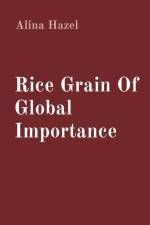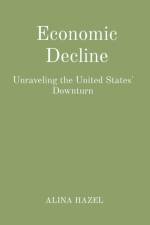von Alina Hazel
37,00 €
The rice grain, an apparently modest staple in numerous cooking styles all over the planet, remains as a worldwide rural symbol of colossal significance. As quite possibly of the most broadly devoured and developed crop, rice fills in as a foundation of food security for a critical part of the worldwide populace. Its importance stretches out past the bounds of the kitchen, affecting social practices, financial elements, and horticultural scenes. Rice, logically known as Oryza sativa, holds a focal spot in the dietary propensities for millions, especially in Asia where it is a dietary staple. Its flexibility makes it a vital piece of a horde of dishes, from sushi in Japan to biryani in India. The healthy benefit of rice lies in its complicated starches, giving a significant wellspring of energy for the people who depend on it as a dietary staple.Developed across different environments and landscapes, rice adjusts to a scope of natural circumstances, from overwhelmed paddies to rainfeduplands. The assortments of rice are pretty much as different as the way of life that develop them, with various strains fit to explicit conditions and culinary inclinations. This flexibility makes rice a versatile yield, fit for enduring different climatic difficulties. The worldwide significance of rice is highlighted by its job in tending to food security challenges. For billions of individuals, especially in Asia and sub-Saharan Africa, rice fills in as an essential wellspring of calories and food. Its development and utilization designs are profoundly intertwined with the occupations of millions of smallholder ranchers who depend on rice cultivating for the purpose of resource. Monetarily, the rice business contributes essentially to the jobs of ranchers, work in related areas like processing and transportation, and public economies all in all. The worldwide rice exchange is a powerful market, with significant sending out and bringing in nations partaking in a complicated snare of global business. Rice-delivering countries, like China, India, and Vietnam, assume significant parts in molding the worldwide rice market elements. The development of rice has additionally formed scenes and environments, affecting water the board practices and encouraging biodiversity in rice paddies. Conventional rice development rehearses, for example, patio cultivating and incorporated bug the board, feature the complex connection between rice cultivating and ecological supportability. Present day horticultural innovations, including high-yielding assortments and accuracy cultivating strategies, keep on changing the rice development scene, influencing both efficiency and ecological contemplations.Additionally, the social meaning of rice is significant. It is implanted in customs, functions, and culinary practices across different societies. The development and reaping of rice are frequently joined by celebrations and festivities that mirror the profound social associations among networks and this fundamental grain.Despite a quickly developing worldwide populace and the difficulties presented by environmental change, the significance of rice as a staple harvest takes on uplifted importance. Logical progressions, including the improvement of environment versatile rice assortments, add to endeavors pointed toward guaranteeing worldwide food security



























